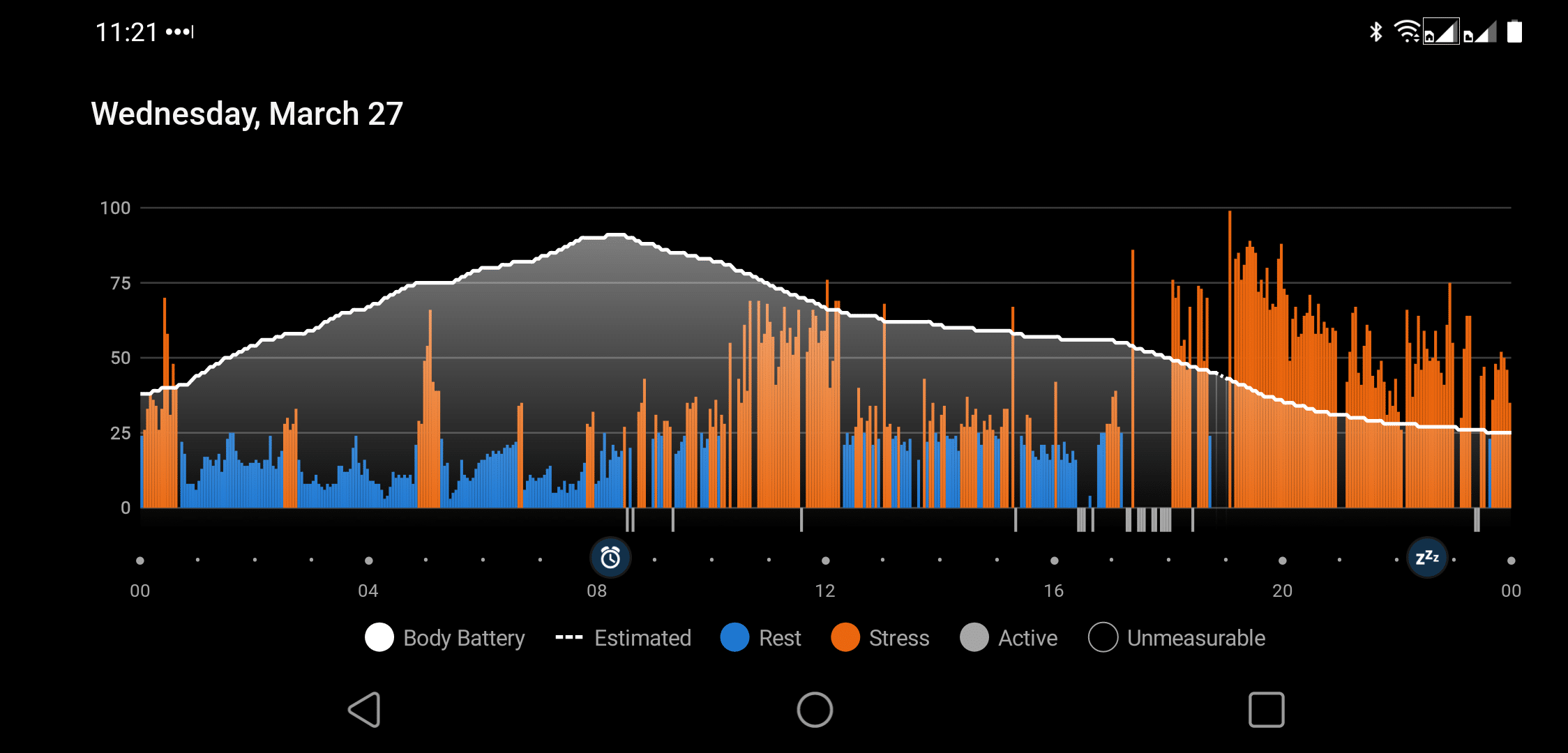Many Garmin users report persistently high stress readings on their devices, prompting concerns about their accuracy and impact. This article aims to dissect potential causes behind these readings and offers practical solutions to ensure your Garmin provides reliable stress level data.
Why is my Garmin showing consistently high stress levels?
Your Garmin may display consistently high stress levels due to improper fit, sensor accuracy issues, or external stressors. Ensuring the device is correctly fitted and calibrated can help improve the accuracy of the stress readings.
Key Tips for Managing Garmin Stress
- Ensure the fit is snug but comfortable.
- Clean the heart rate sensor regularly to improve accuracy.
- Update your device’s firmware to enhance functionality.
- Monitor external stressors like caffeine and noise.
- Use the Garmin app to track and analyze stress patterns.
- Implement relaxation techniques, such as meditation or yoga, to reduce stress.
Understanding Heart Rate Variability
Garmin devices leverage heart rate variability (HRV) to gauge your stress levels. HRV measures the time variation between heartbeats, where more variability typically indicates relaxation and less suggests stress.
But don’t let the technical jargon scare you—it’s essentially how well your internal calmness meter functions! Unfortunately, if your Garmin consistently shows high stress, it might be time to check if it’s not just being a drama queen about your heart rhythms.

Measuring stress through HRV can be tricky, especially with wrist-based heart rate sensors that may not always catch every heartbeat with precision. This might lead to readings that scream ‘high stress’ when you’re just chilling on the couch. So, understanding this technology and its quirks is crucial in tackling why your stress levels seem more like a thriller movie than a zen garden.
Disclosure: Some of the links in this article may be affiliate links, which can compensate me at no cost if you decide to purchase. This will help grow this site and help more people. Thank you for making a difference!
Factors Influencing High Stress Levels
It’s not just about what your Garmin tells you; various factors can manipulate your stress readings. Physical stressors like a bad night’s sleep or the flu can elevate your stress levels, as can mental challenges like a looming deadline or a dispute at home.
Even environmental factors, like being stuck in traffic, can make your Garmin suggest you’re in a crisis. It’s important to recognize the signs and seek healthy coping mechanisms to return to normal stress levels for overall well-being.
Interestingly, some of these stress spikes might not be true reflections of your stress but rather artifacts of how devices interpret irregular heartbeats or changes in body battery level. So next time your Garmin suggests you’re stressed while sipping tea, consider if external factors might be playing puppeteer with your stress levels.
| Factor | Effect on Stress Readings | Possible Solutions |
|---|---|---|
| Improper Fit | May cause inaccurate high stress readings | Adjust the fit of the device |
| Sensor Accuracy | Misreads heart rate, elevating stress levels | Clean the sensor regularly |
| Physical Stressors | Elevates readings due to external stimuli | Address health and environmental conditions |
| Mental Stressors | Increases readings from psychological pressure | Engage in stress-reducing activities |
| Environmental Stressors | Raises readings due to location-based factors | Modify surroundings or move to calmer environments |
Accuracy of Stress Level Measurement
How accurate is your Garmin’s stress tracker? Well, it depends. Heart rate sensors can be finicky creatures. If the watch band is too loose or the sensor is smudged, your device might misread your heart’s signals. Ensuring your Garmin fits properly is key to getting readings that reflect your real stress, not just the stress of having a poorly fitted watch.
This accuracy isn’t just about comfort; it affects the reliability of data used to determine if you’re cool as a cucumber or boiling like a pot on the stove. High stress levels might not always signify a health crisis—sometimes, they’re just a tech hiccup needing a quick fix.
Managing Stress with Lifestyle Changes
Addressing constantly high stress readings isn’t just about wrestling with technology; it’s also about tweaking your lifestyle. Engage in activities that lower stress, like yoga, meditation, or a simple walk in the park. These aren’t just good for your soul; they positively affect your HRV and, consequently, the stress levels your Garmin detects.

Consider alerting your device when stress is medium rather than high. This adjustment allows you to monitor your stress response before it hits the ceiling and implement calming techniques right when needed. Small changes can significantly reduce stress, making your daily interactions with your Garmin more pleasant and less alarming.
Personal Thoughts
In my experience, managing stress requires understanding its origins and practical steps to control it. High stress readings on devices like Garmin can remind us to reassess and adjust our daily routines.
By utilizing scientifically backed methods and personal adjustments, I’ve managed stress indicators from my Garmin better, ensuring they reflect more than just momentary pressures.
Frequently Asked Questions
How can I adjust my Garmin to reduce false high stress alerts?
Adjusting your Garmin to fit snugly on your wrist without being too tight can help reduce false high stress alerts. Regularly clean the heart rate sensor and check for firmware updates to ensure optimal performance and accurate stress measurements.
What external factors can cause high stress readings on my Garmin?
External factors such as eating certain foods, caffeine intake, alcohol consumption, and significant physical exertion can lead to high stress readings on your Garmin. Environmental stressors like noise or crowded places may also skew your device’s stress-tracking accuracy.
Is it normal for Garmin stress levels to be high during sleep?
It is not typical for Garmin stress levels to be high during sleep. High readings can indicate disturbances or poor sleep quality. Ensure your device is correctly calibrated and consider factors like bedroom environment or health issues affecting your sleep and stress levels.
Can weather changes impact the stress levels reported by my Garmin?
As Garmin devices have reported, weather changes can indeed impact stress levels. Barometric pressure fluctuations can affect your body physiologically, leading to changes in heart rate variability and, consequently, the stress levels detected by your device.



